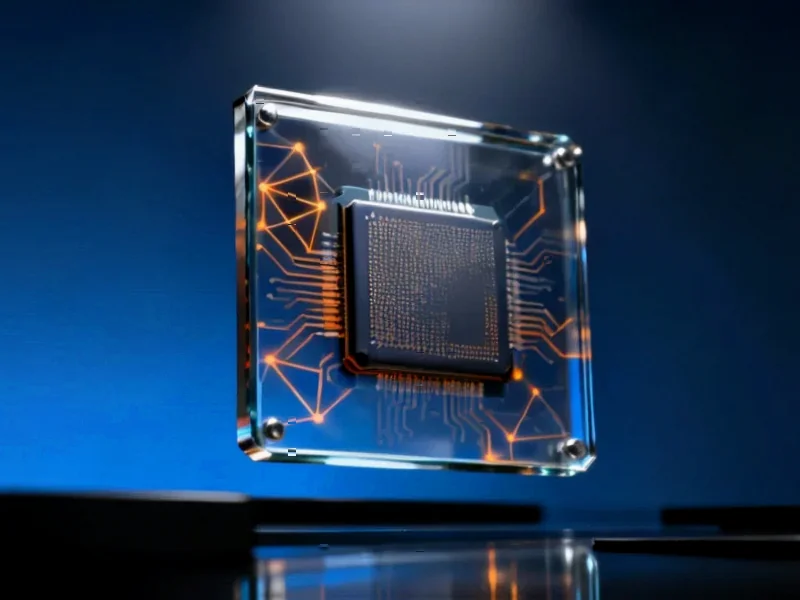NVIDIA’s Decade of Shareholder Value Creation
Over the past ten years, NVIDIA has delivered an extraordinary $83 billion in capital returns to shareholders through a combination of dividends and stock buybacks. This massive capital return program represents one of the most significant shareholder value creation stories in the technology sector, particularly impressive given NVIDIA’s transformation from a gaming-focused graphics company to the undisputed leader in artificial intelligence computing.
Table of Contents
- NVIDIA’s Decade of Shareholder Value Creation
- The Anatomy of Capital Returns: Dividends vs. Buybacks
- Comparative Analysis: NVIDIA vs. Other Capital Return Leaders
- Risk Considerations: NVIDIA’s Historical Volatility
- Strategic Implications for Industrial Computing
- Future Outlook: Sustainability of Capital Returns
- Investment Strategy Considerations
The company’s capacity to generate these returns stems from its dominant position in AI silicon, having generated over $75 billion in operating cash flows during the last twelve months alone. This financial strength provides NVIDIA with substantial flexibility to reward shareholders while simultaneously investing in future growth opportunities across its expanding technology ecosystem.
The Anatomy of Capital Returns: Dividends vs. Buybacks
NVIDIA’s approach to capital return encompasses two primary mechanisms, each serving distinct purposes in the company‘s overall shareholder value strategy. Dividends provide regular income to investors and signal management’s confidence in sustainable cash generation, while share repurchases help optimize the company’s capital structure and increase earnings per share by reducing outstanding shares.
What makes NVIDIA’s case particularly noteworthy is the scale of these returns relative to its market capitalization and growth trajectory. Unlike many mature companies that return capital at the expense of growth investments, NVIDIA has demonstrated an ability to simultaneously fund massive R&D initiatives while maintaining one of the industry’s most substantial capital return programs.
Comparative Analysis: NVIDIA vs. Other Capital Return Leaders
When examining NVIDIA’s capital return strategy in context, several interesting patterns emerge among top-performing companies:
- Growth vs. Return Trade-off: Companies like Meta and Microsoft have returned significantly smaller percentages of their market value to shareholders, instead prioritizing reinvestment for future growth
- Industry Patterns: Technology companies typically maintain lower dividend yields compared to traditional value sectors, focusing more on buybacks and growth investments
- Cash Flow Consistency: NVIDIA’s transformation into an AI powerhouse has created more predictable revenue streams, enabling more consistent capital return policies
Risk Considerations: NVIDIA’s Historical Volatility
Despite its current dominance and financial strength, NVIDIA’s stock has experienced significant declines during market downturns. Historical data reveals several substantial corrections:
- Dot-Com Bubble: 68% decline
- Global Financial Crisis: 85% drop
- Inflation Surge Period: Approximately 66% decrease
- 2018 Correction: 56% decline
- COVID-19 Pandemic: 38% drop
These historical patterns highlight that even companies with strong fundamentals and massive capital return programs remain vulnerable to broader market forces and sector-specific challenges. For investors, this underscores the importance of understanding both the opportunity and risk dimensions of NVIDIA’s investment profile., as earlier coverage
Strategic Implications for Industrial Computing
NVIDIA’s capital return strategy has significant implications for the industrial computing sector. The company’s ability to generate substantial cash flows while maintaining technological leadership creates a virtuous cycle of investment and innovation. This financial strength enables NVIDIA to:
- Aggressively fund R&D for next-generation AI and computing technologies
- Maintain pricing power and competitive advantages in key markets
- Attract and retain top engineering talent through stock-based compensation
- Make strategic acquisitions to complement organic growth initiatives
The company’s success in balancing capital returns with growth investments provides a blueprint for other technology companies navigating the transition from specialized providers to platform leaders in the industrial computing space.
Future Outlook: Sustainability of Capital Returns
Looking forward, NVIDIA’s capacity to maintain its substantial capital return program depends on several key factors. The company’s positioning in multiple growth vectors—including AI training and inference, autonomous vehicles, industrial automation, and edge computing—suggests continued strong cash generation potential.
However, investors should monitor several critical indicators, including:
- Maintenance of technological leadership amid increasing competition
- Diversification of revenue streams beyond current AI dominance
- Global semiconductor cycle dynamics and supply chain stability
- Regulatory developments affecting technology companies
The company’s track record of navigating technological transitions and market cycles suggests management has the strategic vision to adapt its capital return strategy as market conditions evolve.
Investment Strategy Considerations
For investors considering NVIDIA as part of a broader portfolio strategy, the company’s capital return program represents just one component of the overall investment case. While the $83 billion returned to shareholders over the past decade is impressive, investors should evaluate:
- Valuation metrics relative to growth expectations
- Competitive positioning in evolving AI and computing markets
- Portfolio diversification benefits and risk exposure
- Alignment with individual investment time horizons and risk tolerance
NVIDIA’s story demonstrates how successful technology companies can create substantial shareholder value through both capital appreciation and direct capital returns, though this must be balanced against the inherent volatility of the semiconductor sector.
The company’s ability to maintain this balance while continuing to innovate in one of technology’s most dynamic sectors will likely determine whether it can sustain its remarkable capital return trajectory in the coming years.
Related Articles You May Find Interesting
- The Human Edge: How Small Businesses Are Winning with Emotional Intelligence in
- Major Economic Shift: Hermantown Approves Massive Data Center Campus Set to Tran
- Nordic Green Hydrogen Alliance Accelerates Industrial Decarbonization with Ceram
- Europe’s Tech Sovereignty Push: How Industrial Computing Faces 2026 Realities
- Riff Secures €14M Series A to Bridge AI Development Gap with Enterprise-Grade Vi
This article aggregates information from publicly available sources. All trademarks and copyrights belong to their respective owners.
Note: Featured image is for illustrative purposes only and does not represent any specific product, service, or entity mentioned in this article.



